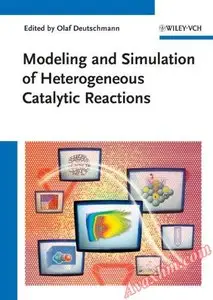Modeling and Simulation of Heterogeneous Catalytic Reactions: From the Molecular Process to the Technical System
Wiley-VCH; 1 edition | ISBN: 3527321209 | 370 pages | PDF | December 12, 2011 | English | 6.12 Mb
Wiley-VCH; 1 edition | ISBN: 3527321209 | 370 pages | PDF | December 12, 2011 | English | 6.12 Mb
The Nobel Prize in Chemistry 2007 awarded to Gerhard Ertl for his groundbreaking studies in surface chemistry highlighted the importance
of heterogeneous catalysis not only for modern chemical industry but also for environmental protection. Heterogeneous catalysis is seen as
one of the key technologies which could solve the challenges associated with the increasing diversification of raw materials and energy sources. It is the decisive step in most chemical industry processes, a major method of reducing pollutant emissions from mobile sources and is present in fuel cells to produce electricity. The increasing power of computers over the last decades has led to modeling and numerical
simulation becoming valuable tools in heterogeneous catalysis.
This book covers many aspects, from the state-of-the-art in modeling and simulations of heterogeneous catalytic reactions on a molecular level to heterogeneous catalytic reactions from an engineering perspective. This first book on the topic conveys expert knowledge from surface
science to both chemists and engineers interested in heterogeneous catalysis. The well-known and international authors comprehensively
present many aspects of the wide bridge between surface science and catalytic technologies, including DFT calculations, reaction dynamics
on surfaces, Monte Carlo simulations, heterogeneous reaction rates, reactions in porous media, electro-catalytic reactions, technical reactors,
and perspectives of chemical and automobile industry on modeling heterogeneous catalysis. The result is a one-stop reference for theoretical
and physical chemists, catalysis researchers, materials scientists, chemical engineers, and chemists in industry who would like to broaden
their horizon and get a substantial overview on the different aspects of modeling and simulation of heterogeneous catalytic reactions.



